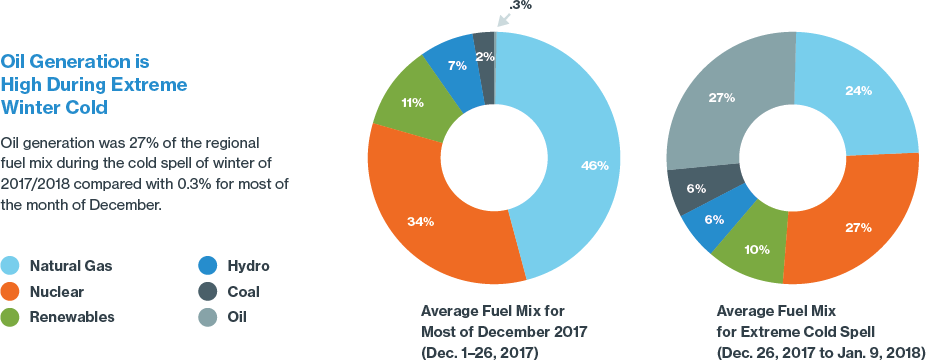Over the last decade, New England has seen the retirement of significant amounts of the resources it has traditionally depended on for electricity. Many of these resources, which include nuclear power plants as well as coal- and oil-fired generators, are able to store fuel on-site; this allows them to sustain operations during expended periods of cold weather.
Natural gas plays a pivotal role in powering the region, though the supply of this fuel can be constrained in winter. The region’s largest natural-gas-fired generator retired in 2024.
State decarbonization policies are driving a shift toward resources with variable output, such as solar and wind, battery storage, and imports. Some of these resources are supported by state-backed power purchase agreements, meaning they can often bid into the region’s competitive wholesale electricity markets at prices below those of traditional resources, including natural gas.
The transition from older fossil fuel resources toward clean energy resources will drive reductions in greenhouse gas emissions. However, the shift to weather-dependent resources also presents new potential challenges to operating the grid reliably.

See Status of Nonprice Retirement Requests and Retirement De-List Bids for the most current list of future and historical resource retirements in New England.
Several factors are challenging the ability of older plants to recover the cost of capital investments for maintenance.
For many, the only option is to retire. These resources are likely to be replaced by intermittent clean energy resources.
On days when natural-gas-fired generators have unconstrained access to low-cost pipeline gas, they usually produce the majority of New England’s electricity. However, natural gas delivery constraints in winter caused by high demand for this fuel from both the heating and electric power sectors can prevent these resources from filling this need during cold weather.
Wind output can be especially variable during winter. During an extended cold spell in 2017–2018, ISO system operators observed variable hour-to-hour generation from wind turbines, as wind speeds fluctuated throughout the 16-day period. At times, transmission congestion also required curtailments of some wind farms.
With the region’s last coal plant set to close, oil-fired plants, which typically don’t run often, are critical on cold winter days when the fuel for natural-gas-fired generators is limited and expensive. Distributed solar power can significantly reduce daytime demand in winter, delaying depletion of stored fuels. However, because cloud and snow cover reduce solar output, there’s no guarantee solar power will be available when it’s needed most.
